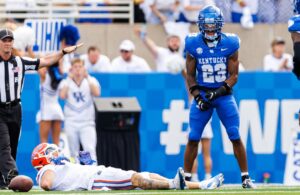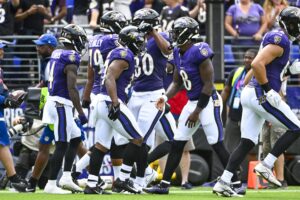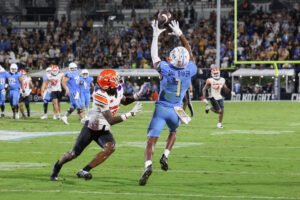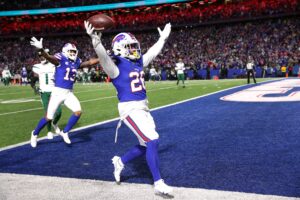Moving into the NFC South’s portion of our newest series, “The Breakdown,” we begin with the Tampa Bay Buccaneers schematic philosophy. Jameis Winston enters his third season as the Buccaneers high-variance starting quarterback and looks to continually guide the franchise to the top of the division. Defensively, Tampa Bay was one of the NFL’s most inconsistent units last season and was particularly poor against the run. Let’s take a look at what the Buccaneers do on both sides of the ball.
The Breakdown: A Look at the Tampa Bay Buccaneers Schematic Philosophy
Attacking Down the Field
Head coach Dirk Koetter spent between 2007-2015 as an offensive coordinator in the league, the last season with the Buccaneers before being named to his current position in 2016. That lone season as the team’s offensive coordinator was Winston’s first, and Koetter did an excellent job of structuring his system around his young quarterback.
The crux of this passing game is built on longer, slower-developing route concepts-posts; digs and vertical shot-as a part of Koetter’s five and seven-step drop aerial attack. A passing game structured like such can become burdensome on an offensive, so Koetter will often operate out of 11 and 12 personnel to provide Winston with an extra pass protector or two to maintain the integrity of the design. This also directly suits their running game as formations for both are now similar enough to keep defenses on their toes.
It’s fairly uncommon to see offenses utilize chip-blockers as it generally limits the amount of time a receiver has to get into his route, most notably at the underneath level. Incorporating them into a deep drop back passing games such as Koetter’s allows for extra protection up front while simultaneously allowing enough time for these receivers to get into the routes within the concept’s timing. Furthermore, additions of wide receiver DeSean Jackson and first round tight end O.J. Howard provide Winston with two potentially-reliable pass catchers who can manipulate the way defenses are forced to treat them.
Mike Smith‘s Zone Defense
Former Atlanta Falcons head coach Mike Smith enters his second season as the Buccaneers defensive coordinator after a 2016 in which the unit was stout against the pass, but wildly inconsistent overall. He operates out of a base 4-3 system that is predicated on adapting to the level of personnel and remaining flexible.
As a base zone defense, Smith dialed up a bevy of Cover 3 and Cover 4 looks that simultaneously limited rookie corner Vernon Hargreaves‘ struggles in press coverage. According to Pro Football Focus, they were among the top five in zone coverage looks. A direct extension of the zone’s coverage principles is the four-man rush that must find a way to generate through pressure, hence why the franchise spent a 2016 second round pick on edge rusher Noah Spence and signed Chris Baker this past off-season to bolster the interior in both their 4-3 and 3-4 sets.
In Atlanta, Smith’s defense were centered around disguising coverages and their rotations, rather than incorporating a bevy of exotic blitzes and pressure schemes to get offenses off-rhythm. His modus operandi in Tampa Bay has featured the inclusion of these pressure packages due to relatively underwhelming safety play, but corner Brent Grimes displayed a quality level of dependability last season. The team spent a second round pick on safety Justin Evans in April, signaling Smith’s potential desire to allow his defensive linemen to get after the quarterback with disguised coverage behind them.
Atlanta’s unprecedented run last season caught the entire league by surprise, particularly when you consider the difference between the Carolina Panthers 2015 and 2016 campaigns. Kyle Shanahan is off to coach the San Francisco 49ers, while the New Orleans Saints were particularly underwhelming last season. But Carolina provided talented quarterback Cam Newton with additional weapons via the draft. After finishing second in the South division and supplying Winston with worthy weapons himself (fifth-round running back Jeremy McNichols has a chance to outplay his draft spot), the Buccaneers have a viable opportunity to challenge for the division’s top spot.
Main Image:






